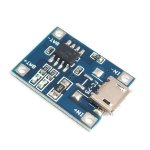Chuck(G)
25k Member
That's the point with the AA alkalines--you can stick them in a bag off the board, so that if they do leak, it's not a big issue.
I wouldn't try to use a rechargeable lithium coin cell in place of the NiCd one--the charging characteristics are wildly different. You might have some surprises.
The reason for using primary cells in place of the rechargeable is that there's no real point to the rechargeables--the primary will last its shelf life essentially, which may be greater than the lifetime of a rechargeable. A diode (or enhancement-type MOSFET if you want to get fancy) is cheap and durable. If you're stingy, you can usually scavenge a few off some piece of junked gear.
I wouldn't try to use a rechargeable lithium coin cell in place of the NiCd one--the charging characteristics are wildly different. You might have some surprises.
The reason for using primary cells in place of the rechargeable is that there's no real point to the rechargeables--the primary will last its shelf life essentially, which may be greater than the lifetime of a rechargeable. A diode (or enhancement-type MOSFET if you want to get fancy) is cheap and durable. If you're stingy, you can usually scavenge a few off some piece of junked gear.

